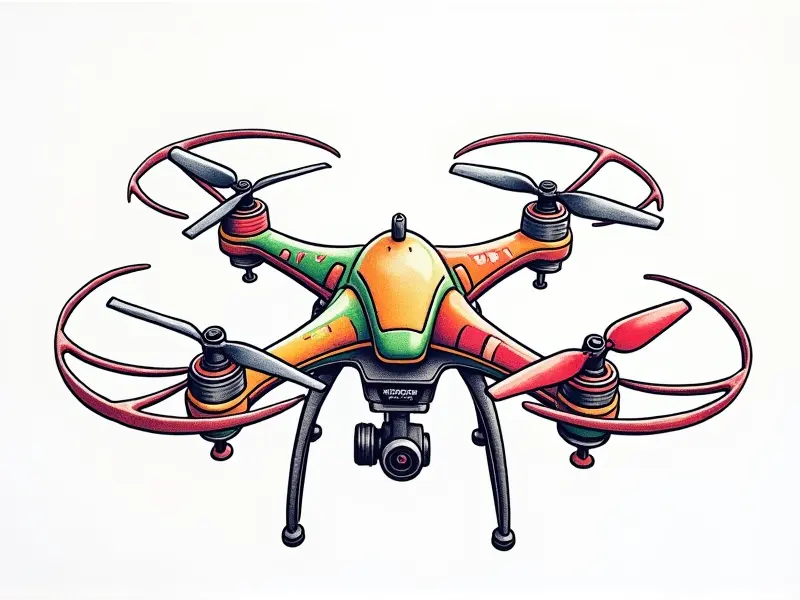Building a small FPV racer DIY

DIY Micro FPV Drone Project
Welcome to the world of micro FPV racing drones! Building your own tiny quadcopter is an exciting and rewarding project that combines creativity, engineering skills, and a passion for aerial sports. This guide will walk you through the process of crafting a pocket-sized FPV racer from scratch.
Crafting a Tiny FPV Racing Quadcopter
Creating your own micro FPV racing quadcopter is not only fun but also challenging. It requires careful planning, precise assembly, and a keen eye for detail to ensure optimal performance. Here’s what you need to know:
Selecting the Right Components
- Frame: Choose lightweight materials like carbon fiber or plastic.
- Motors: Opt for high-performance, small-sized motors.
- Battery: Use a compact LiPo battery with sufficient capacity.
- ESC (Electronic Speed Controller): Select ESCs that are lightweight and efficient.
- Flycam: A tiny camera is essential for FPV viewing.
- VTX (Video Transmitter): Ensure it has a good range and low latency.
Build Your Own Mini FPV Racer
The process of building your mini FPV racer involves several steps, each crucial for the final outcome. Here’s how you can start:
Assembling the Frame
- Cutting and Shaping: Use a laser cutter or precision tools to shape the frame.
- Attachment Points: Ensure secure attachment points for motors, ESCs, and battery.
Motor Installation
- Motor Placement: Position motors evenly on all four arms of the quadcopter.
- Cable Management: Keep wiring neat to avoid interference with propellers and other components.
How to Make a Pocket-Sized FPV Racer
Making your pocket-sized FPV racer involves meticulous planning and execution. Here’s how you can proceed:
Flycam Setup
- Camera Mounting: Secure the camera in place for optimal viewing.
- FPV Goggles: Ensure compatibility with your chosen VTX and camera setup.
Battery Installation
The battery is a critical component that affects flight time and performance. Follow these steps:
- Placement: Place the battery in a central location for balanced weight distribution.
- Secure Connection: Use connectors to ensure a stable power supply.
Building an Ultra-Compact FPV Racing Drone
To build an ultra-compact FPV racing drone, you need to focus on minimizing size while maximizing performance. Here’s how:
VTX Installation
- Mounting Position: Choose a position that minimizes interference with other components.
- Antenna Placement: Ensure the antenna is positioned to provide optimal signal strength.
Create a Small-Scale FPV Racer at Home
Creating your small-scale FPV racer at home requires access to basic tools and components. Here’s what you need:
Necessary Tools
- Soldering Iron: Essential for connecting wires.
- Laser Cutter: Useful for precise frame cutting.
- Multimeter: To test electrical components.
Assemble a Miniature FPV Racing Drone
The assembly process is crucial to the success of your mini FPV racer. Follow these steps carefully:
Wiring and Testing
- Connecting ESCs: Ensure proper connection between ESCs and motors.
- Powering Up: Test the system to ensure all components are functioning correctly.
DIY Nano FPV Racer Build Guide
This section provides a detailed guide for building your nano FPV racer. Here’s what you need to know:
Component Selection
- Nano Motors: Choose high-performance, lightweight motors.
- Micro VTX: Opt for a compact and efficient video transmitter.
Constructing a Micro FPV Racing Quadcopter
The construction of your micro FPV racing quadcopter involves several intricate steps. Here’s how to proceed:
Final Assembly
- Frame Completion: Ensure all components are securely attached.
- Propeller Installation: Attach propellers and balance them for optimal flight performance.
Tiny FPV Racer: The Ultimate DIY Project
Your tiny FPV racer is not just a hobby project; it’s an engineering marvel. Here’s how to make the most of your build:
Flight Testing and Calibration
- Flying Conditions: Test in open spaces with minimal wind interference.
- Tuning Parameters: Adjust settings for optimal flight performance.
Step-by-Step Mini FPV Racer Construction
The step-by-step guide to building your mini FPV racer is essential for a successful project. Follow these steps:
Preparation Phase
- Gather Components: Ensure you have all necessary parts before starting.
- Tool Setup: Prepare your workspace with the right tools and equipment.
Assembly Phase
- Frame Assembly: Follow instructions for precise frame construction.
- Motor Installation: Carefully install motors in their designated positions.
Testing and Calibration Phase
- Flying Test: Conduct initial flight tests to check performance.
- Tuning Adjustments: Fine-tune settings for optimal flight characteristics.
Building your own micro FPV racer is a rewarding endeavor that combines technical skills with creative flair. By following this guide, you’ll be well on your way to creating an impressive and functional mini quadcopter. Happy building!

